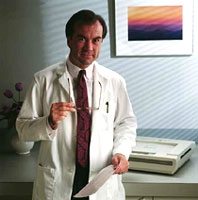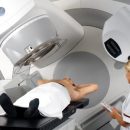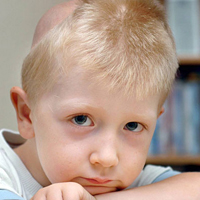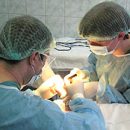Stomach cancer - one of the most common malignant tumors. People often use fried, smoked, salted and canned foods, smoked, salted and canned foods are susceptible to risk of stomach cancer. What to do if you are in the risk zone at which symptoms need to contact the doctor.
Content
Symptoms of gastric cancer
Patients with stomach cancer rarely appear symptoms in the early stages of the disease. For this reason, the gastric cancer is difficult to diagnose in a timely manner.
Symptoms of stomach cancer can be as follows:
- Inexplicable weight loss and no appetite.
- Stomach pain.
- Friendly sensations (discomfort) in the abdomen, often above the navel.
- Feeling of the stomach overflow after making a small amount of food.
- Heartburn, disruption of digestion or symptoms resembling an ulcer.
- Nausea.
- Vomiting with blood or without it.
- Increase the size of the abdomen
- The growing pallor of the skin.
Of course, many of these symptoms can be caused by other diseases, and not cancer. However, if these symptoms arose and they continue for a long period of time, it is necessary to urgently consult a doctor, especially if you have for 50 years and you have the risk factors for the development of gastric cancer.
Surveys in suspected gastric cancer
 If you have a reason to suspect a gastric cancer, then you need to immediately consult a doctor who, talking to you, will hold the necessary examination. The doctor examines the stomach and check if there is a tumor there. In addition, it will determine whether the liver is not increased, which may mean its defeat with the tumor process.
If you have a reason to suspect a gastric cancer, then you need to immediately consult a doctor who, talking to you, will hold the necessary examination. The doctor examines the stomach and check if there is a tumor there. In addition, it will determine whether the liver is not increased, which may mean its defeat with the tumor process.
Special examination methods will then be held, which will allow confirming or rejecting the diagnosis of gastric cancer. When confirming the diagnosis of cancer, it is necessary to clarify its distribution. This is carried out using a number of methods.
Endoscopy stomach. With this procedure, after anesthesia, a thin flexible tube with an illuminator (endoscope) is introduced through the mouth and the doctor examines the esophagus, the stomach and the initial portion of the small intestine (12 pans). In the presence of a suspicious area, a small piece of the stomach mucosa (biopsy) is taken for microscopic examination.
Contrast study of the gastrointestinal tract. The patient is given a barray, which covers the mucous membrane of the esophagus, the stomach and the initial portion of the small intestine and several radiographs are performed. After that, if there is an indication, it is introduced through the air tube in the stomach so that the barium spread over the mucous membrane of the thin layer. This technique makes it possible to detect even very minor changes in the stomach.
Ultrasound Research (Ultrasound). At the same time, the method uses sound waves to determine the state of the internal organs. Ultrasound is sometimes carried out in combination with the introduction of a special probe through the nose or mouth in the stomach, which makes it possible to estimate the prevalence of the tumor inside the stomach and in the surrounding fabrics and lymph nodes.
Computed tomography (CT). In this method, a special X-ray technique is used, which gives the ability to take pictures at different angles. This obtains detailed information about the organs and tissues. It turns out how common stomach cancer and which organs (for example, liver) are amazed. With this method, you can perform aiming biopsy of a suspicious area with a subsequent study.
Positron-emission tomography (PET). Radioactive glucose is introduced into the Vienna of the patient. It concentrates in the tumor, and the scanner detects the zones of its accumulation. The method allows you to figure out the spread of cancer beyond the stomach and clarify the stage of the disease.
Magnetic resonance Tomography (MRI). This method, like CT, allows you to explore the organism in layers, but at the same time powerful magnets are used instead of radiation.
Radiography of the chest makes it possible to identify the damage to the lungs with the tumor process.
Laparoscopy. Thin flexible tube with a small video camera (laparoscope) is introduced through a small incision in the abdominal cavity. In this way, you can estimate the likelihood of tumor removal and its prevalence in the abdominal cavity. In addition, using a special device you can take a piece of fabric (biopsy) or liquid for research.
Laboratory research. A complete blood test is carried out to identify anemia (Malokrovia), and also examines the feces for hidden blood.
What is - screening of stomach cancer
Screening is a previously active detection of cancer at an early stage, when there are no symptoms of the disease. The main method of screening cancer of the stomach is the fulfillment of the regular (1-2 times a year) of gastroscopy, at which prematubic states and small tumors are detected, which are not accompanied by symptoms.
Treatment of stomach cancer
There are various methods for the treatment of gastric cancer. The choice of the treatment method depends on many factors. Of course, the location and stage of the tumor are important factors. Other factors include age, general condition and personal wishes.
The main methods for the treatment of stomach cancer are: operational, chemotherapy and radiation therapy. Often the best approach to treatment can be the use of several methods.
Operational treatment
Depending on the type of cancer of the stomach and the stage of the disease, an operation can be performed with a tumor removal along with a part of the stomach. If possible, the surgeon leaves an unaffected part of the stomach.
Currently, the operation is the only way to cure a gastric cancer. If there are 0, I, II or III stages of the stomach cancer, as well as relative to a satisfactory condition, an attempt is made to complete the tumor removal.
Even if cancer at the time of treatment is distributed and cannot be completely removed, the operation can help prevent bleeding from a tumor or contribute to the passage of food through the intestine. This type of operational admission is called palliative, t.E. Performed in order to relieve or prevent symptoms, and not in order to cure cancer.
Chemotherapy
Under chemotherapy implies the use of antitumor drugs for the destruction of tumor cells. Typically, drugs are prescribed intravenously or inside, t.E. Through Roth. As soon as the drug enters the bloodstream, it spreads throughout the body. Chemotherapy is usually applied to the impact on the common tumor.
Chemotherapy can be the main method of treatment of gastric cancer, when the tumor has already spread to remote organs. This method of therapy is applied before or after surgery. Experience has shown that chemotherapy can ease the symptoms in some patients with stomach cancer, especially when cancer has spread to other areas of the body. There is an indication that chemotherapy in combination with radiation therapy may delay the recurrence (refund) of the disease and extend the life of patients with a common process.
Chemotherapeutic preparations not only destroy tumor cells, but can also damage normal cells, which leads to side effects. These side effects depend on the type of preparations, their doses and the duration of treatment. Most of them pass after the end of treatment.
Radiation therapy
In this method, the rays of high energies are used to destroy or reduce the tumor. Exposure can be outer or using radioactive materials administered directly to tumor tissue (internal or implantation). In the gastric cancer, outdoor irradiation is usually applied.
After the operation, radiation therapy can be used to destroy small foci of the tumor, which cannot be seen or removed during operational intervention. It is believed that radiation therapy, especially in combination with chemotherapy, can delay or prevent recurrence (refund) of cancer after surgery and can contribute to the extension of the patient's life. Radiation therapy can be used to facilitate symptoms, such as pain, bleeding and the difficulty of passing food.
From side effects of radiation therapy It is necessary to note minor skin reactions, nausea, vomiting, liquid chair or increased fatigue. These symptoms usually pass a few weeks after the cessation of treatment. Irradiation can aggravate the side effects of chemotherapy.









